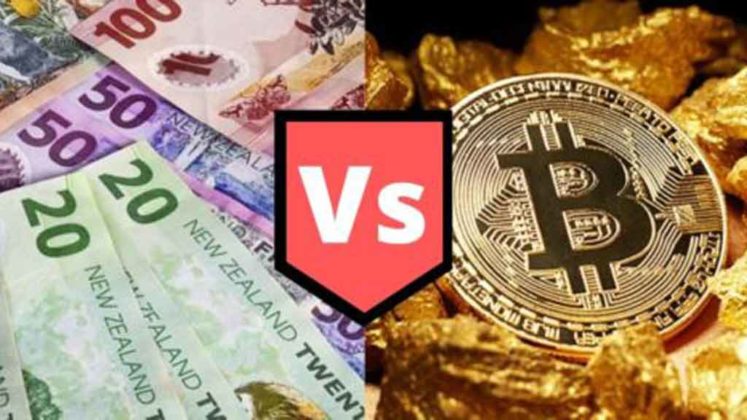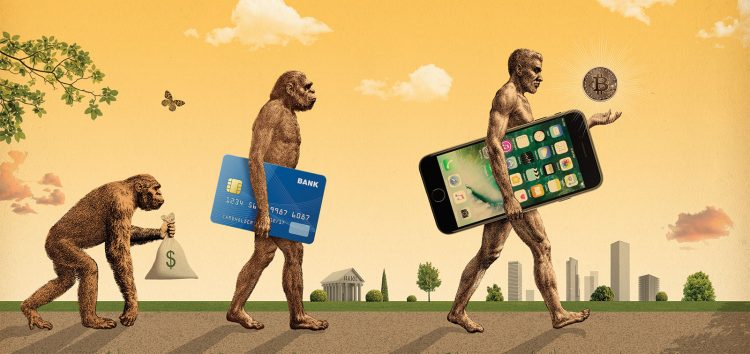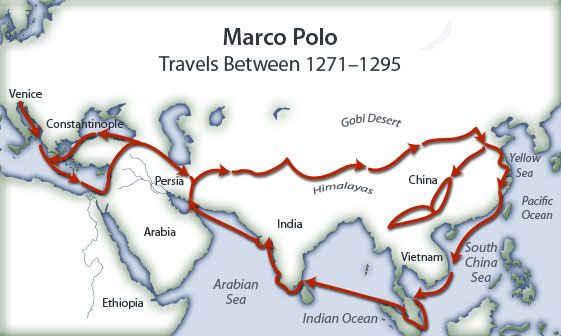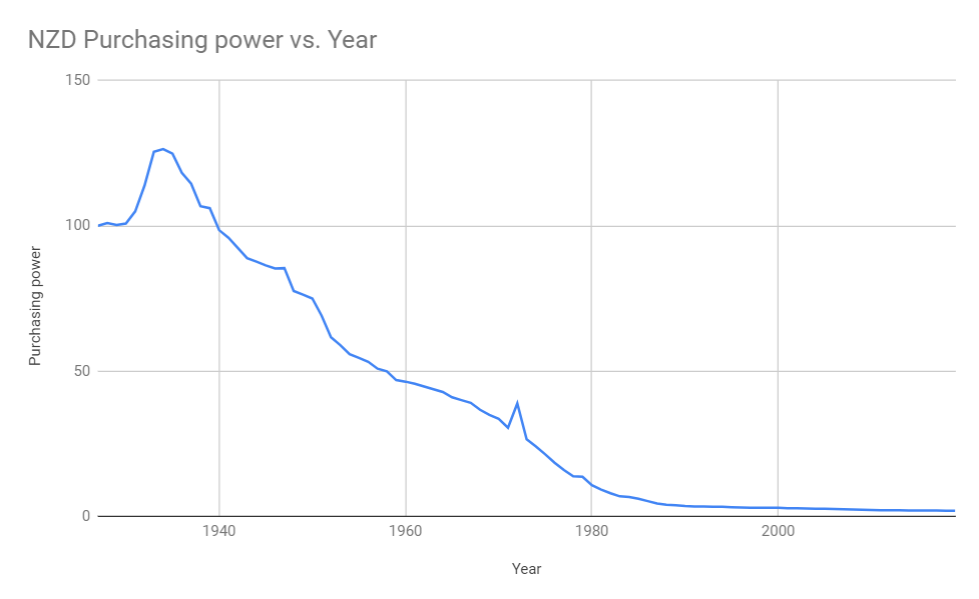Bitcoin Vs NZD – An Easy Crypto Comparison
Bitcoin currently averages 350,000 transactions per day, and many see this as a sign that the cryptocurrency revolution is unstoppable. Some proponents even believe that cryptocurrency will eventually replace fiat currency like the NZD altogether. The only question is, what is the real difference between cryptocurrency and fiat like the NZD? What Exactly Does the Term ‘Fiat Cash’ Really Mean?.


Bitcoin currently averages 350,000 transactions per day, and many see this as a sign that the cryptocurrency revolution is unstoppable. Some proponents even believe that cryptocurrency will eventually replace fiat currency like the NZD altogether. The only question is, what is the real difference between cryptocurrency and fiat like the NZD?

What Exactly Does the Term ‘Fiat Cash’ Really Mean?
To understand the differences between fiat currency and cryptocurrency, it is important to understand how money itself works.
Throughout history, there have been three main forms of money. For most of human history, people used ‘commodity money.’ This was money which itself had tangible material value.
For an easy example of commodity money, we can look back to the days of the Roman Empire. During this period, coins were made of real gold, silver, bronze and copper. These were and still are metals of real tangible value.

Marco Polo and the Switch to Representative Currency
When using commodity money, people would pay a precise weight in different precious metals for goods and services. If these weren’t available, people would barter and trade with other commodities. However, all this began to change in the 13th Century.
During the Tang Dynasty in China between 618 A.D. and 907 A.D. Chinese merchants began replacing commodity money with representative money. This began with the issuing of letters of credit called Fei Qian. (Often translated as ‘flying money.’)
In effect, Chinese Fei Qian letters of credit represent the world’s first true form of paper money. However, representative paper money should not be confused with fiat cash as we know it today.
- Representative money could always be exchanged for a stated weight of gold or some other commodity.
- By being backed by physical commodities, representative money had a fixed value that would not depreciate as a result of inflation.
- Governments couldn’t print representative money at will. This helped keep prices of goods and services stable.
At first, representative money was used exclusively in China. However, after spending 17-years in China during his travels, Marco Polo brought the concept to Europe. Representative money then gradually began to replace commodity money all across Europe and Asia.

The Rise of the Modern Fiat Monetary System
To this day, many people assume that paper money in their wallet or their bank account is representative of some kind of commodity. However, true representative money effectively became extinct in 1973. On this date, the United States left the gold standard.
Fiat currencies already existed before 1973. However, the United States Dollar was a representative form of currency up until 1973. By this time, the dollar was also already the world’s reserve currency.
While it existed the U.S. gold standard guaranteed that dollars in circulation were always redeemable for an amount of real gold held in the Federal Reserve. Now, though, the USD, (like all fiat forms of money), has no real intrinsic value.

Why Fiat Monetary Systems Fail
Fiat money certainly has its uses. Some even argue that it is no longer possible to use representative money because of the number of notes and coins required to be in circulation. However, fiat currency also has a fatal flaw.
Because fiat currency isn’t backed by anything material, governments can print money whenever they like—and they do. This causes several major problems.
- Printing money devalues the value of fiat money already in existence.
- Devaluing the worth of a currency causes inflation that drives up the cost of living.
- Inflation lowers the value of savings and eventually leads to debts becoming unserviceable.
To demonstrate the scope of the problem with fiat money, one need only look to current U.S. National Debt levels. In 1972 (before America left the gold standard), U.S. National Debt stood at $427 billion. (34% of GDP). Right now in 2020, U.S. National Debt stands at over $23 trillion. (106% of GDP.)
Current debt levels can also only increase, as the U.S. government prints more money to pay interest on debt, that subtracts more value from the dollar in the process.

The Case for Decentralised Cryptocurrencies
Critics of decentralised cryptocurrencies say that cryptocurrency can’t have value because cryptocurrency coins aren’t backed by anything tangible. However, cryptocurrencies like Bitcoin are more similar to representative money used until 1973, than today’s fiat money.
Decentralised cryptocurrencies like Bitcoin have a fixed supply. This means that governments can’t print money whenever they like. Like representative money, this also makes coins like Bitcoin deflationary.
- Having a fixed supply means that decentralised cryptocurrencies become scarcer over time.
- As coins become scarcer, cryptocurrencies increases in value. (Rather than diminish in value like fiat money.)

Decentralised Cryptocurrency as a Solution to Inflation
Being deflationary is easily the biggest benefit decentralised cryptocurrencies have over fiat money.
Imagine that you are 20-years old in 1970 and start paying $100 a month into a pension scheme. You might hope that this will secure you a comfortable retirement. However, now in 2020, inflation means that the $100 you saved in 1970 has a lot less buying power.
Inflation essentially means that savers see savings diminish in value every year, while the cost of living increases. The only way to prevent this is to use savings to buy physical commodities like gold, or Bitcoin.

Will Decentralised Cryptocurrencies Ever Replace Fiat Money?
Will cryptocurrency ever replace fiat money completely? According to a late 2019 Deutsche Bank report, the answer is yes. Deutsche Bank even believes that this might happen as early as 2030.
It is, however, not by any means guaranteed that a future mainstream monetary system based on cryptocurrency will be decentralised as cryptocurrency enthusiasts might hope.
Deutsche Bank and other financial institutions believe that a future flip from fiat to crypto will only be made possible by centralised cryptocurrencies.
Decentralised cryptocurrencies like Bitcoin remove the ability of governments to enforce national monetary policies. Governments don’t want to surrender this ability. Because of this, cryptocurrencies that replace fiat money are likely to be centralised digital equivalents of fiat money itself. There is good news, though.
Even if governments roll out cryptocurrency versions of existing fiat cash, there will still be place in the world for decentralised cryptocurrencies. Governments have already proved incapable of outlawing decentralised cryptocurrencies. Neither will the last ever Bitcoin be mined until at least 2140.
In addition to this, there is always the likelihood that a cryptocurrency like Bitcoin will replace the USD as the global reserve currency. Only time will tell how this all plays out, but there is one thing we can all agree on – money is changing whether we like it or not.
Share to
Stay curious and informed
Your info will be handled according to our Privacy Policy.
Make sure to follow our Twitter, Instagram, and YouTube channel to stay up-to-date with Easy Crypto!
Also, don’t forget to subscribe to our monthly newsletter to have the latest crypto insights, news, and updates delivered to our inbox.
Disclaimer: Information is current as at the date of publication. This is general information only and is not intended to be advice. Crypto is volatile, carries risk and the value can go up and down. Past performance is not an indicator of future returns. Please do your own research.
Last updated October 18, 2022




